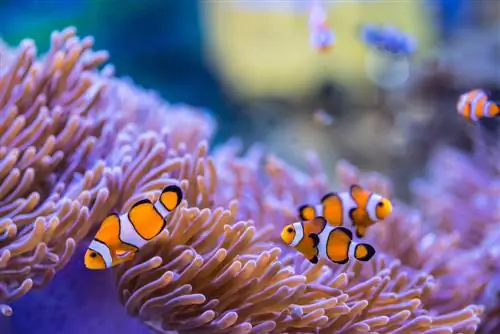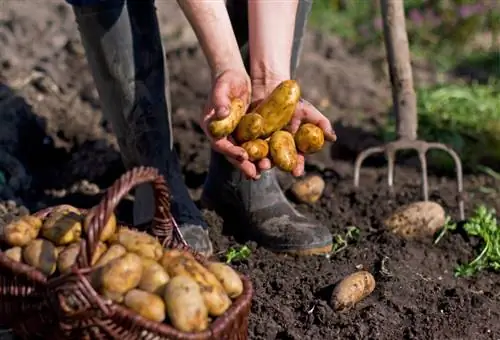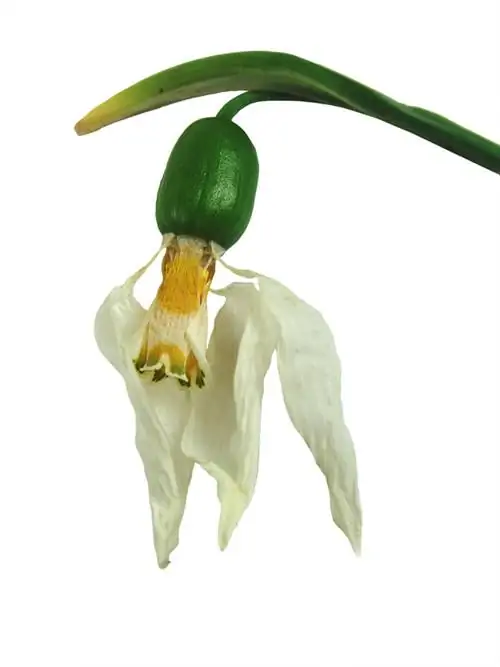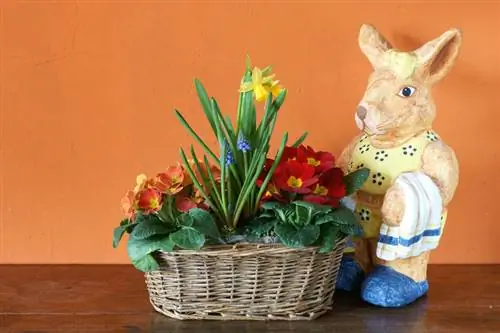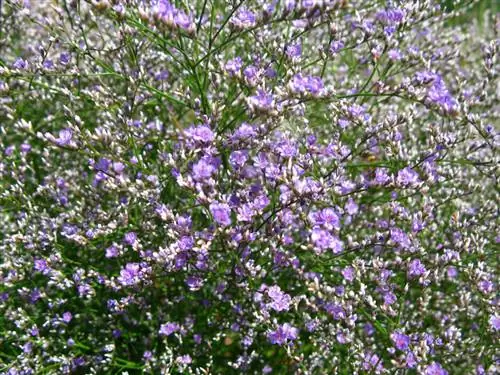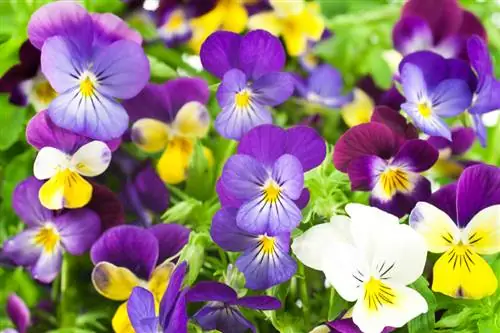- Author admin [email protected].
- Public 2023-12-16 16:46.
- Last modified 2025-01-23 11:22.
Tropical sea anemones colonize coral reefs, while sea anemones thrive in the cool North Sea. Cultivated in a seawater aquarium, the exotic flower animals attract everyone's attention. If you still have questions about caring for an actinia on the heart, find a tried-and-tested answer here.
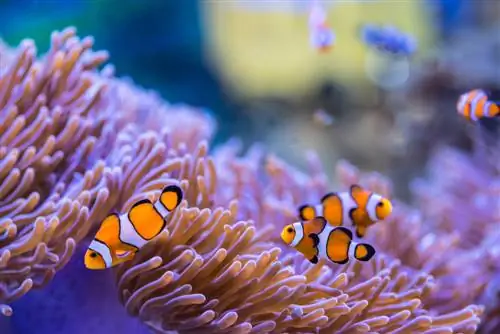
What does a sea anemone need to care for in the aquarium?
To care for sea anemones in the aquarium, they need a suitable substrate, daily feeding with plankton or shrimp, and a water temperature of 2-27 degrees Celsius, depending on the species. The supply of light and regular cleaning of the aquarium are also important.
Planting sea anemones correctly
In order to properly plant a sea carnation or other sea anemone species, a substrate must be created that is as close as possible to the natural habitat. The flower animal is equipped with a powerful muscle on its foot disc, which it uses to anchor itself in the ground. However, that doesn't stop an actinia from wandering around the aquarium, hunting for prey or the perfect location. Therefore, equip the floor of your water world with a suitable surface before releasing the flower animals. The following suggestions may serve as inspiration:
- Use high-quality aragonite sand as substrate
- Lay out snail shells and small stones for the sea carnation
- Settling standing growing species on a decorative reef column
- Offering small sea anemones a bed of seagrass for colonization
Wood, collected flotsam and other hard substrates are also readily accepted as substrate by sea anemones. To create a lifelike soft flow, it is worth investing in a spherical flow pump (€129.00 on Amazon). It is important to note that when setting up a new aquarium, you should use sea anemones as the first inhabitants, as their nettles pose a danger to other species. Once they have established themselves at the location, move the roommates at an appropriate safety distance.
Care tips
If an actinia finds a species-appropriate habitat in a seawater aquarium with a temperature of 18 to 27 degrees for tropical species and a cooler 2 to 20 degrees for European or Atlantic sea anemones, care is limited to the following measures:
- Feed daily with small shrimp, plankton, glass crabs or dust food from specialist retailers
- Some species, such as sea carnation, feed several times a day to prevent them from shrinking
If you are away for a long time, automatic feeding machines ensure regular care of sea anemones and other creatures in the aquarium. To ensure the light supply to an actinia, the panes should be cleaned every 1-2 days. In addition, the amount of water used should be topped up regularly.
Which location is suitable?
The sea carnation is flexible when it comes to light and temperature conditions, as long as the aquarium is not exposed to direct sunlight. In the wild, the actinia can be found in the North Sea and the Atlantic as well as in the Pacific and the Mediterranean. Temperatures between 5 and 27 degrees Celsius are tolerated. The sea anemone also tolerates varying levels of salinity in the water. When purchasing, ask the retailer about the specific requirements for your favorite stock.
The correct planting distance
The divergent sea anemones have very different requirements when it comes to planting distance. Sea carnation settlements have already been explored in the seas with 500 specimens per square meter. Other species prefer solitary settlements, such as the Atlantic zebra anemone. A safe distance from plant neighbors of a different species is definitely recommended so that they are out of the reach of the tentacles and nettle threads.
What soil does the plant need?
Specialist retailers stock inexpensive sand from the Caribbean with a grain size of 0.25 to 1 mm as an adequate substrate for the seawater aquarium. If you want to offer your sea carnation a luxurious substrate, use high-quality aragonite sand with a grain size of 0.5 to 1.5 mm. Color variants in white, red and black enable a creative component in the design of the aquarium.
Fertilize sea anemones properly
Feeding is a more appropriate term for the nutrient supply of sea anemones. To ensure that the flower animals do not starve, they are supplied daily with plankton, shrimp or similar frozen and dusty food from specialist retailers.
Propagate sea anemones
Depending on the species, an actinia reproduces independently using free-swimming eggs or larvae that find a suitable location within the aquarium. Some sea anemones cut off parts of tissue in the form of self-sufficient vegetative reproduction. These sections also resettle in the appropriate place. This is what the offspring produced by the hobby gardener follows. To grow additional specimens of a sea carnation or other sea anemone, cut the flower animal in half lengthwise. Each segment has the potential to become an independent actinia and is cared for like an adult specimen right from the start.
How do I transplant correctly?
Replacing a sea anemone only goes smoothly if the flower animal agrees. Otherwise, the stubborn actinia will move back to its original place within a short time. The flower pot method has proven to be a good way to convince a sea carnation or other species to move. A carefully cleaned flower pot is placed over the actinia. Since only light now shines through the opening in the bottom, it climbs into the pot and can be moved to the new location without being damaged.
Is sea anemone poisonous?
The sticky tentacles and stinging threads of an actinia contain a stinging venom that can cause you significant pain at the slightest touch. The degree of toxicity varies between different species and subspecies. If in doubt, you should only approach your sea carnation with protective gloves.
Trivia
Flower animals form fascinating partnerships with fish and other sea creatures. For example, the symbiosis that hermit crabs enter into with a small mantle actinia is spectacular. The crabs plant the actinia on their shell and are thus better protected from enemies. At the same time, the anemone benefits from optimized access to food due to its mobility. Other sea anemone species even specialize in communities with fish, such as the tropical anemone with the clownfish or the carpet anemone with the Clark's anemonefish.
Beautiful varieties
- Carpet anemone: a gray, green or yellow sea anemone that is considered one of the most durable plants for aquariums
- Purple rose: fantastically beautiful actinia (Actinia equina) in rich red for aquariums up to 50 liters volume
- Horse actinia: Atlantic actinia (Actinia fragacea) in light red with yellow dots and a height of 10 cm
- Shingles: Mediterranean sea anemone (Actinia cari), greenish shimmering, 8 cm high, for aquariums up to 100 liters volume
- Sea clove: thrives in white or yellow, preferably in cooler water up to 20 degrees Celsius
- Zebra anemone: the 3-6 cm small sea anemone impresses with its striped markings in the 50 liter aquarium
- Corkscrew anemone: large actinia with a height of 50 cm and 17 cm long tentacles in gray-brown with a red shimmer
- Chilean sea anemone: magnificent actinia for the cold water aquarium in bright red and 10 cm tall

